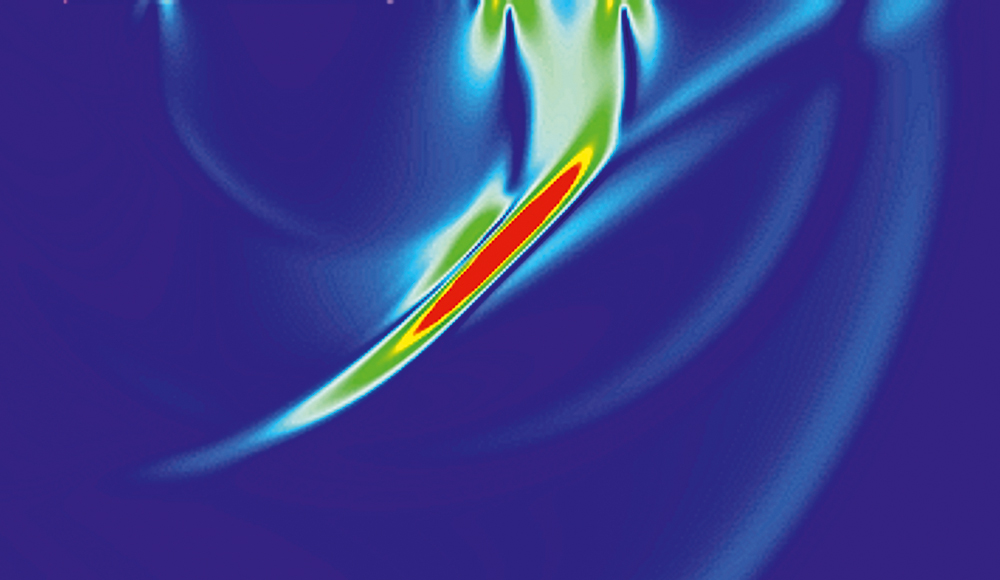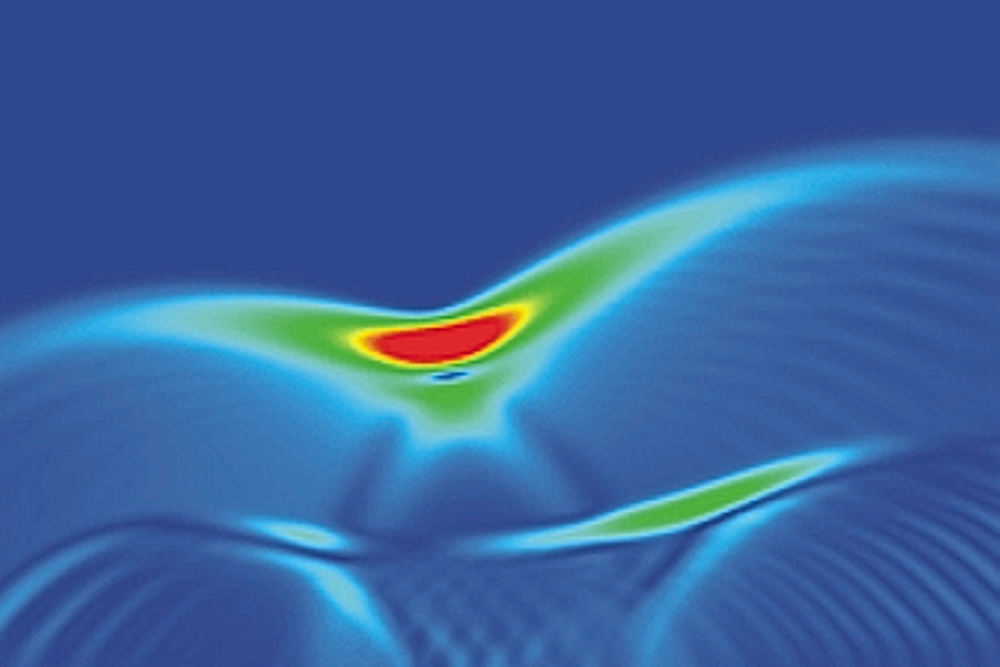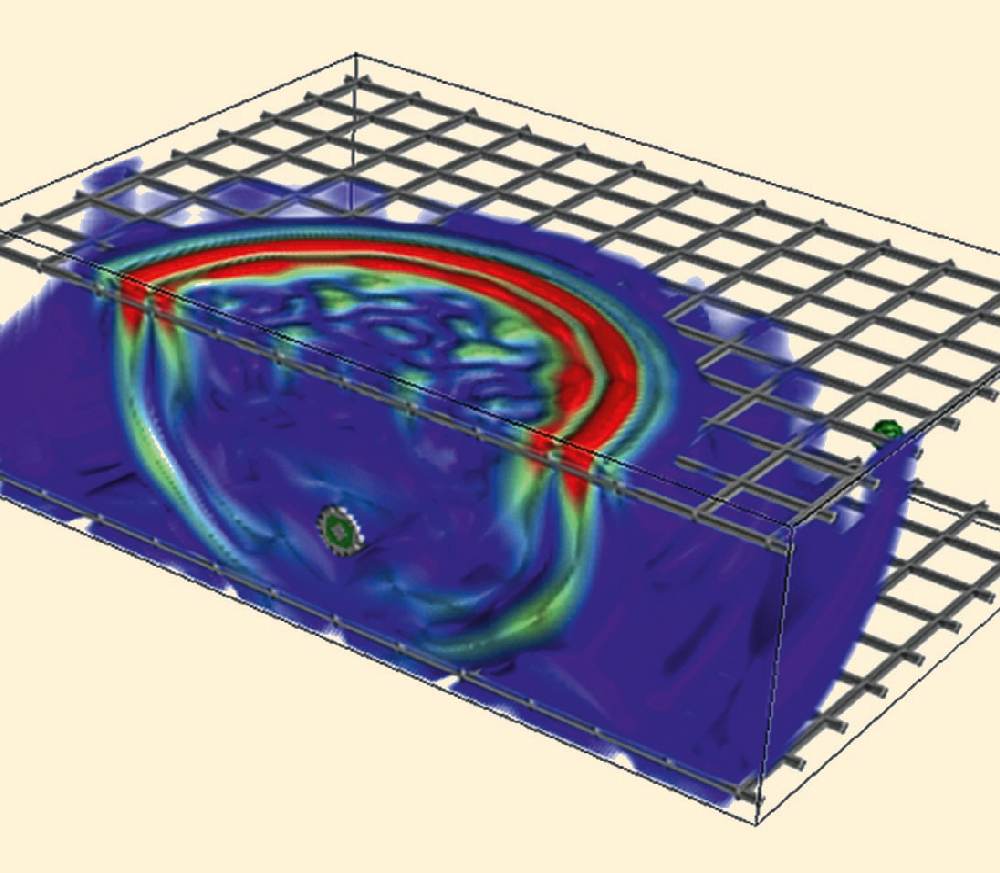
Simulation and modeling

Today, simulation tools are essential for optimizing ultrasonic test systems and for developing new methods. They allow to check the method for physical plausibility and determine the best possible measuring and transducer parameters even before the first measurement setup has actually been built. This saves time and money in development and results in test systems with significantly improved performance parameters.
At Fraunhofer IKTS, simulation-supported planning and optimization is carried out with commercially available software as well as with proprietary numerical simulation tools developed at IKTS specifically for ultrasonic applications. Our own developments are based on the Elastodynamic Finite Integration Technique (EFIT) and allow for a complete and realistic simulation of test systems with regard to wave physics, taking into account diffraction, interference, mode conversions and multiple scattering. With EFIT isotropic and anisotropic as well as homogeneous and heterogeneous materials can be modelled. Coupled models of solids and fluid media can also be realized. The simulation results are made available in the form of time-domain signals, B and C images, sector images, wave front snapshots or video animations.



Fields of application
Simulation-supported methods are suitable for various fields of application. Fraunhofer IKTS has been using simulation-supported tools successfully for many years in numerous ultrasonic and acoustic projects ranging from industrial to research applications:
- Simulation-supported optimization of transducer wave fields including phased array
- Optimization of test setups and sensor configurations
- Determination of model-assisted POD (Probability Of Detection) curves for ultrasonic testing
- Guided waves for condition (structural health) monitoring
- Applications based on surface acoustic waves as well aslaser and air-coupled ultrasonics
- Acoustic problems (room acoustics, sound emission, noise protection etc.)
Performance characteristics
- Proprietary numerical ultrasound solvers
- Simulation-based on full wave physics
- Consideration of diffraction, interference, mode conversions, multiple scattering etc.
- Isotropic and anisotropic, homogeneous and heterogeneous materials
- Solids and fluid media
- 2D and 3D models
- Time-domain signals, wave front snapshots, video animations
Over the course of the past 20 years, Fraunhofer IKTS has developed comprehensive know-how on modeling and an extensive and flexible module library for numerous applications in research and development. When processing new projects, the best-suited existing simulation model from the library is always chosen. In a second step, the model is adapted, optimized and developed further as required by the current application. Consequently the development effort for individual modules and related costs remains relatively moderate and early results are available very fast. The close collaboration with the experimental working groups at Fraunhofer IKTS ensures that the simulations are realistic and application-oriented. For instance, the models are validated and optimized regularly through wave field measurements based on immersion techniques or laser vibrometry.
- Basic research (specifically for new testing approaches)
- Feasibility studies
- Test planning and supervision
- Interpretation of results
- System optimization (including sensors and sensor configuration)
- Visualization and imaging